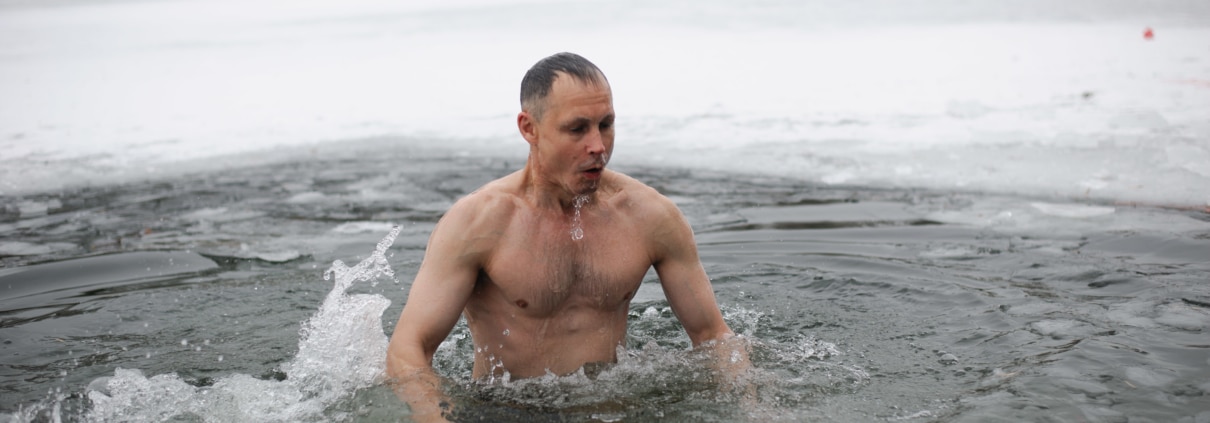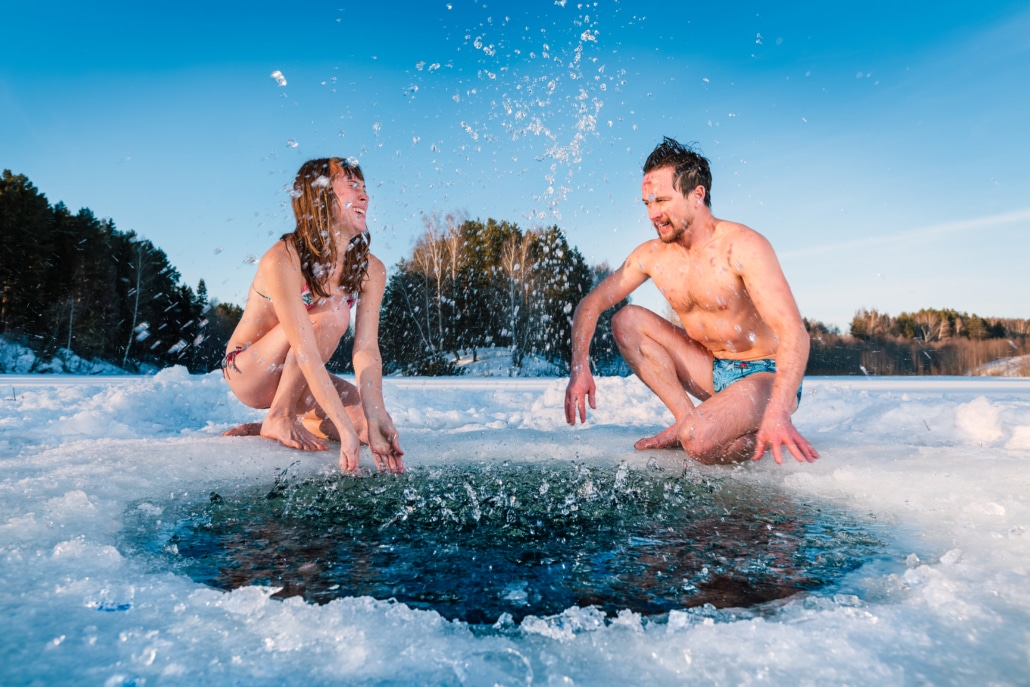Benefits of an Ice Bath (12 Listed)
Are there benefits to an ice bath? It’s a common practice among athletes or fitness enthusiasts to take a plunge in ice water after a rigorous workout or a big game. It is also known as Cold Water Immersion (CWI) or cryotherapy. It is used to recuperate faster from intense training sessions and reduce muscle pain and soreness thereafter.
The main benefits to an ice bath have been found to be:
- Ease Muscle Soreness
- Increases energy and uplifts mood
- Regulates central nervous system
- Improves Resilience
- Shifts your immune system
- Cardiovascular Circulation
- May enhance performance
- Improves sleep
- Improves discipline
- Boosts mental health
- Prevent the risk of injury
Like most practices, it is good to question its effectiveness. To find out if ice baths work, the benefits it offers your body after a big workout, and how to do it safely, read on and see what research says about ice baths.
Cold water has been used therapeutically for many centuries and continues to be used in more modern times. Hippocrates, the father of medicine, was accustomed to using cold water to treat the most severe illnesses.
Wim Hof, nicknamed the Iceman, is able to maintain constant body temperature in icy conditions. A combination of concentration, breathing and exposure to cold has been shown to modulate the body’s immune response. These findings have certainly inspired its popularity.
What is an ice bath?
Ice baths are quick, therapeutic dips in frigid water with temperatures ranging from 50-59 degrees Fahrenheit. It is as simple as adding three large bags of ice to a bathtub halfway filled with cold water. If using on just part of the body, such as the wrist or elbow, you could use a smaller tub.
The theory behind ice bath after exercise
Intense training sessions cause tiny tears in your muscle fibers called microtrauma. As a result, muscles are stimulated and repaired, as well as strengthened. As your muscles burn energy, they create a build-up of lactic acids and other wastes causing muscle pain and soreness. It will be naturally eliminated over 24-72 hours. An ice bath can speed up this process, drastically reducing the recovery time.
When you immerse yourself in icy water, the stress responses in your brain signal your body to restore its core temperature by increasing blood flow to that region. The introduction of fresh oxygenated blood flushes the toxins rapidly. This way, your muscle recovery process speeds up. This happens through the body’s ‘fight-or-flight’ response.
Who shouldn’t take an ice bath
Ice baths can be dangerous for people with specific medical conditions such as cardiovascular disease, high blood pressure, diabetes, peripheral neuropathy, poor circulation, cold agglutinin, or venous stasis.
In addition, you must ensure that there is no underlying problem like a fractured or torn tendon. When dealing with a more severe injury, using an ice bath will only numb and cover up the pain. It may delay appropriate healing. So, it is best to consult with a knowledgeable healthcare professional before you go ahead with it.
Ice bath benefits
Increases energy and uplifts mood
One of the most prevalent benefits of the ice bath is its ability to alter mood. Ice baths increase the secretion of endorphins and other neurotransmitters like norepinephrine. Norepinephrine is one of the hormones known to regulate energy, focus, and attention. Activities that increase this hormone are found to be potent yet natural antidepressants.
Regulates central nervous system
Sudden exposure to cold water is stressful for your body but this can help you better manage stress. How? By regulating your nervous system. Following the initial shock, when your body adapts to the cold water, your fight-or-flight response eases and the nervous system can regain control.
So, an ice bath trains the system to relax and de-stress. It thereby aids in uplifting your mood and mental state. You can better control your stress responses if you can regulate your nervous system.
Ease muscle soreness
The cold water constricts your blood vessels making the blood rush from your extremities to all your vital organs. When you step out of the bath, these blood vessels dilate, directing blood flow to the muscle tissues in your extremities. This shrinking and expanding of the blood vessels dramatically increases blood flow.
This process brings oxygenated blood carrying nutrients to the muscles and flushes out toxins. It naturally decreases the inflammatory response and helps your muscles heal faster.
So, ice baths help reduce muscle soreness and accelerate recovery, reducing the onset of delayed muscle soreness compared to basic rest.
Improves resilience
After the initial shock of the cold water, the body begins to adapt, making it stronger through a process called hormesis. Repeated exposures will consequently toughen your body. You will also benefit from long-term gains such as emotional regulation, better pain management, increased resilience, greater connection, and general wellbeing.
Shifts your immune system
An ice bath pushes your body beyond its comfort zone (as discussed above) and this has a direct effect on the immune system. A 2016 study found that people who regularly took cold showers were 30 percent less likely to fall sick. Cold showers can strengthen your immune response in combination with focused breath work.
Cardiovascular circulation
If you exercise intensively, taking a dip in cold water afterwards may help ease your cardiac stress. Physiological stress or hormonal recovery may not necessarily be improved by it. Nonetheless, in comparison to passive recovery, participants’ heart rates can be reduced faster by immersion in cold water.
Prevent the risk of injury
Because an ice bath rapidly reduces the body temperature after an intense workout, it can help prevent heat injuries such as exercise-induced hyperthermia.
Boosts mental health
Although initially ice baths can be physically uncomfortable, they offer potential mental health benefits. The initial despair will improve by focusing and concentrating on your breath. Many people will get accustomed to the cold over time and find it an integral part of their recovery process. This adaptability and resilience can be applied not just to training and sports but also to other areas of life.
Improves discipline
It is mind over matter when it comes to taking the plunge (pun intended!). It isn’t easy to get into an ice bath when the temperature outside is freezing. It can get pretty intense. If you overcome your reluctance or doubt, it will make you tougher, and in the end, you will be much stronger.
Improves sleep
Some participants vouch that ice baths have improved their sleep quality. Some noticed a marked improvement in their REM sleep. This benefit is primarily anecdotal and not proven by research.
However, one way to support this claim is that ice baths help your body’s core temperature cool down rapidly after a rigorous workout. The whole process can feel satisfying and calming so when your body feels less fatigued, you feel more relaxed and tend to sleep better.
May enhance performance
Because an ice bath encourages a balanced nervous system, it may improve future workout performance by improving reaction time and explosiveness.
Despite the lack of concrete evidence as to its benefits, many athletes have used cold water immersion to improve their performance. Though it is highly dependent on the temperature of the water, duration of immersion, and other factors like rest, recovery, diet and hydration, there is some convincing anecdotal evidence that speed and strength are improved.
Burns fat
Cold plunging triggers your body’s brown fat or brown adipose tissue. This tissue can fire up your metabolism, increasing insulin sensitivity and burn white fat.
It is important to note that cold plunging alone won’t be effective in losing fat. It has to be complemented with a healthy diet and active lifestyle with appropriate rest and recovery.
How long should I ice bath?
If you are trying it for the first time, starting low and going slow is best. At first, you should limit your time to no longer than five minutes. If you feel comfortable, you could test out staying for 10 to 15 minutes at 50-59 degrees Fahrenheit in the following session. Staying in for longer doesn’t offer any additional benefits.
It is recommended to start at about 68 degrees Fahrenheit, about 20 degrees Celsius. Don’t let the numbers mislead you! That’s still pretty cold for a bath.
If you want to reap the full benefits of an ice bath, it is best to immerse your entire body in the ice bath. But if you aren’t feeling adventurous enough, you may want to take it slow. First, dip your feet and calf. As you get comfortable, you can lower yourself to your chest.
Are ice baths harmful?
Ice baths are good for you when done safely for the suggested duration and temperature. You can consider it if you are healthy and have no other underlying health issues. Focus on slowing your breath down, and you’ll be able to relax quicker. But if you are unsure or just overwhelmed, it helps to have a friend or partner close by who can help you should the need arise.
Cold water exposure can present the risk of frostbite or hypothermia. If you stay in the water longer than suggested and begin shivering, you must get out immediately. Don’t ignore your body’s signals.
Final words on ice bath benefits
Although it might seem counter-intuitive to intentionally expose your body to freezing temperatures, an ice bath has several scientifically validated health benefits. Having an ice bath can be transformative for some. It can lead them to make it a part of their regular wellness routine.
Whether you are an athlete or a weekend warrior, if you choose to use ice baths as a method of recovery, the pay-off is tremendous but be sure to carefully follow the recommended guidelines mentioned here.





